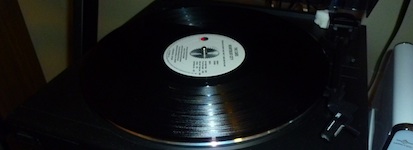
Despite the disposable nature of consumer goods in America, several of the items I use daily are older than me. I suppose 29 years old isn’t terribly old, but consider how easily people discard and replace their belongings and the astonishing changes the world has been through since 1981:
–End of Cold War
–The Gulf War
–9/11
–Internet
–Mobile phones for everyone
–Korean cars became respectable
I exist in a very different world from the one I was born to and so do some of the cars, electronics, and appliances I own and use daily.
I fail to find joy in the “irony” of “vintage” — the fashionable revival of old objects simply for their age. I do have a sizable vinyl collection — I like the covers, the way they sound, and the “live” feeling of the needle vibrating over grooves and physically reproducing the audio. But I realize, obviously, that digital music is far more dependable, convenient, and consistent (if not quite as pleasing to listen to).
While I enjoy old electronics and classic cars I favor the comfort, safety, and security of the modern world. Some prefer life before the prevalence of cell phones and the internet, but I have no positive recollections of having to use the phone book to blindly shop for services, nor did I enjoy having to use a filthy phone booth to make a call from the road.
And my grandfather, who died when I was a kid, would probably have lived a few more years if he had access to today’s advanced healthcare.
Though I do have fond memories of the past, I have no silly notions of it being better. The modern world is exactly where I want to be.
That said, some products of the past were built to a higher standard, intended to last as long as their owners.
Here are a few examples of old things that I own and use on a regular basis.
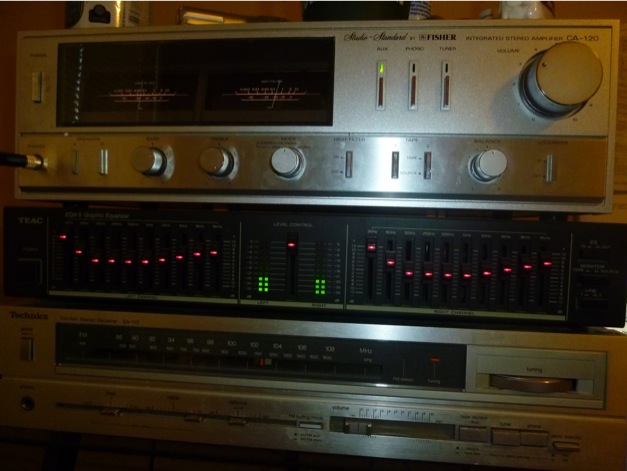
At the bottom is a Technics SA-110 receiver my dad purchased in the early 1980s. He won a small prize in the lottery and bought this receiver, a matching tape deck, and a pair of Kenwood speakers. A few years later he bought the black Teac equalizer sitting above it.
I acquired the Fisher CA-120 amplifier a year ago through Craigslist — I’m a sucker for VU meters.
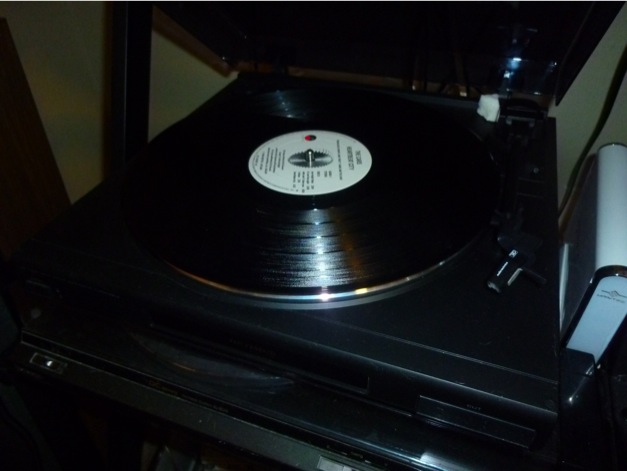
These are my two turntables. At the bottom is my Technics SL-BD10 belt-driven manual turntable with a Grado Black cartridge. I damaged my cartridge while attempting to clean it, so I purchased an Optimus LAB-1000 turntable from a Swedish fellow, also through Craigslist.

One of my hundreds of vinyl records.
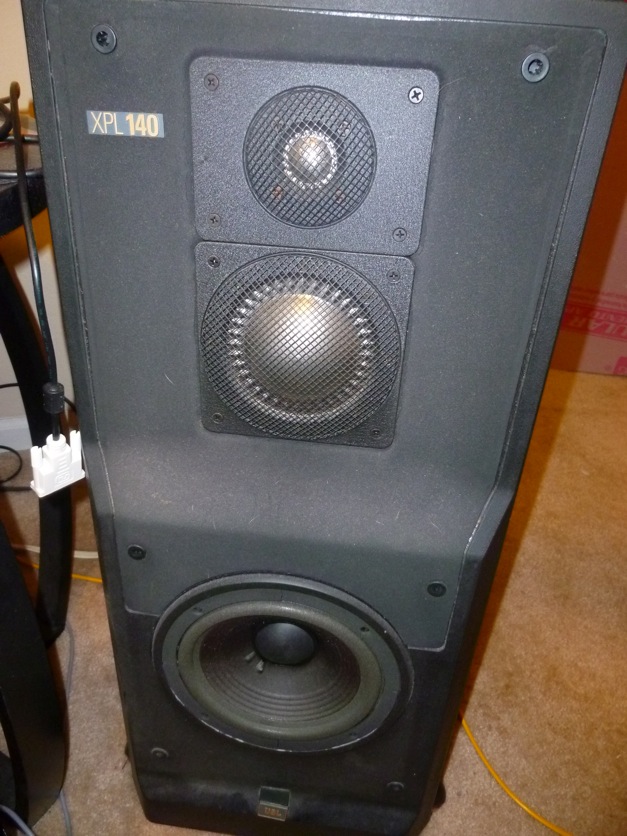
These JBL speakers from the 1990s sound incredible, with a full and natural sound that faithfully produces recordings without attempting to reshape the sound.
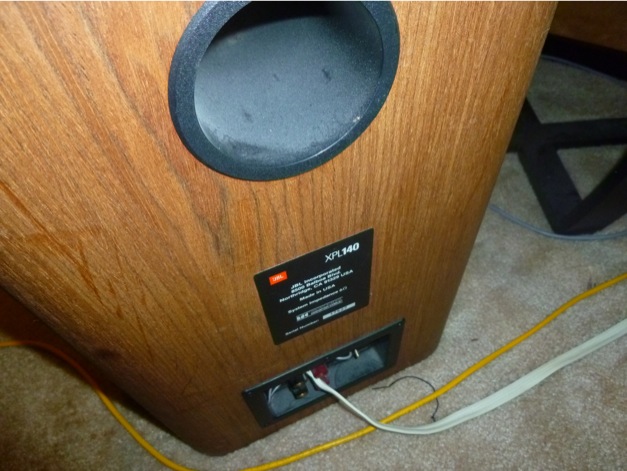
Its hard to believe they were $2000 for the pair back then. Adjusting for inflation, that’s the equivalent of $3000 today.
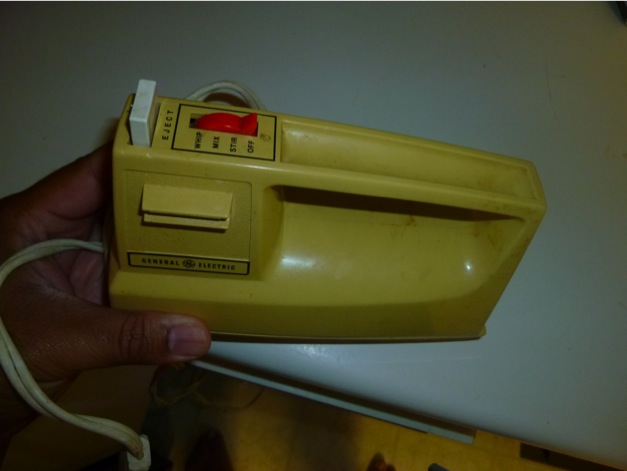
This is a GE hand mixer my mom bought in the early 80s. Check out the color! I still have the original blades and use it once in a while to make Jello pudding. Almost three decades later the darn thing still works like new with zero maintenance.

Note that it was made in the USA – Bridgeport, Connecticut. I know, its filthy.
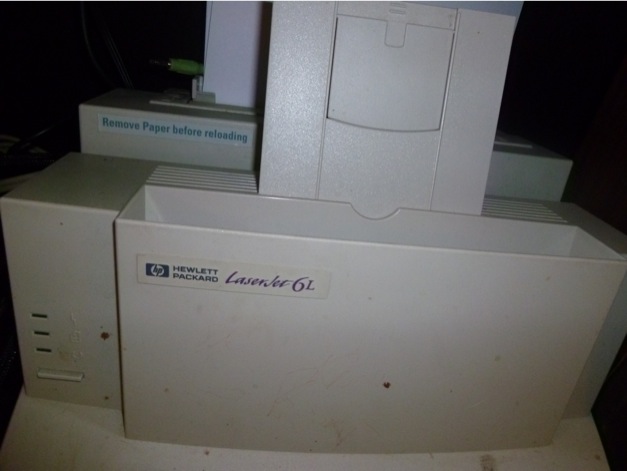
My workhorse printer. I picked this up for free nearly eight years ago through Freecycle. It needed a $5 roller kit and nothing more. Yes, new laser printers are faster and more power-efficient, but $10 aftermarket toners keep my old Laserjet humming along for cheap. Because its used at home, speed is no issue (it’s quite slow).
I still use a red steel toolbox that belonged to my dad. I backed over it once and the darn thing didn’t bend or break! And of course here’s my 1991 Saab 900:
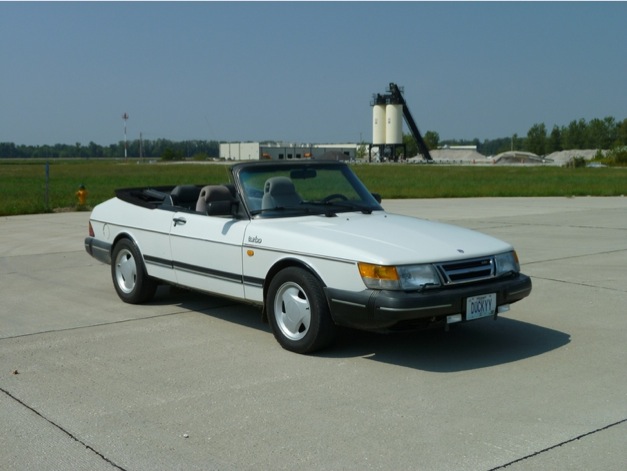
Old automobiles, unfortunately, are different from old electronics and toys. They require ongoing maintenance and care and one lazy or neglectful owner is enough to ruin a vehicle, as I’ve discovered after thousands of dollars in repair bills, compensating for the total neglect of previous owners.
Today’s heavily computerized automobiles may require a dealer visit for service and troubleshooting, but repairs are typically (typically!) less frequent. Excluding depreciation and the cost of fuel, it generally costs less to put 100,000 miles on a new car than it did a couple decades ago.
In the Pacific Northwest, salt is used sparingly in the winter, so like communist Cuba you may see several 40-60 year old cars in average physical condition being driven routinely. There’s something oddly reassuring about that.
Older may not always be better but in a highly disposable world, the old can outlast new.
“some products of the past were built to a higher standard, intended to last as long as their owners.”
“but in a highly disposable world, the old can outlast new.”
I’ve been thinking this for a while. Plenty of others bust my balls for older cars and possessions, but if its tired but true and dependable (and works!) its worth owning- in my opinion. Heck, the developing countries get our old (1950-1970’s) sewing machines for mass production. They work great!
Sometimes I’m saddened and other times I’m amazed, but this world full of disposable and convenience items leaves us with a limited skill set and problem solving ability. Theres a “guy for that” and a “person who takes care of this for me,” everywhere. Self reliance is dying here and it isn’t a healthy notion. Not to say that specialization and the availability of products and modern conveniences aren’t a good thing, but I’m not sure that I ultimately consider it progress.